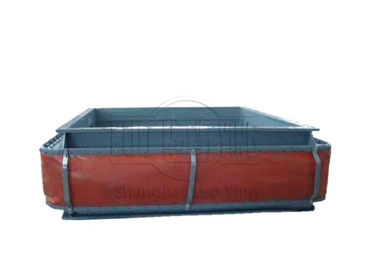What are the causes of the rupture and penetration of non-metallic expansion joint skin for desulfur
Feb-23-17
As one of the common specifications of desulfurization pipeline, non-metallic expansion joint is installed in the desulfurization system to absorb the displacement or vibration between the flue and desulfurization tower caused by thermal expansion, cold contraction or mechanical movement. As the medium conveyed is flue gas, the flue gas cannot leak outside the flue during use.After the installation of non-metallic expansion joints in the desulfurization pipeline for a period of time, corrosion will become larger with the increase of corrosion area, and if the replacement is not timely, leakage will occur. Due to the desulfurization tower spray pipe and nozzle, the desulfurizer solution is atomized and sprayed out in contact with the flowing flue gas to form steam, which then liquefies and accumulates in the non-metallic expansion joints. As the liquefied liquid contains acid and alkali, it will corrode the skin after a long time. Corrosion is one of the causes of leakage.
Desulfurization piping is used to purify and discharge flue gas. From boiler flue gas, boiler to FGD tower flue, FGD tower desulfurization, FGD flue gas from the upper part of the FGD tower to the chimney flue, that is, "net flue" four systems, FGD expansion joints are usually installed between the original flue and FGD tower. Non-metallic skin as the main material, if the skin aging resistance and sealing performance is not enough, elasticity and fatigue performance is poor, leakage will occur.
The specific reason for the leakage of non-metallic skin of desulfurization expansion joint needs to be analyzed and proved according to the site. In order to adapt to the use of desulfurization pipeline, the structure of non-metallic expansion joints has changed. The drainage port is installed at the bottom of the expansion joint to discharge the accumulated acid and alkali liquid. Avoid corrosion of the skin.
When installed for later use, regular inspection is required to check whether the interface at both ends of the non-metallic expansion joint is loose and whether the appearance of the skin is a little corroded. Facilitate timely detection and correction of problems.


